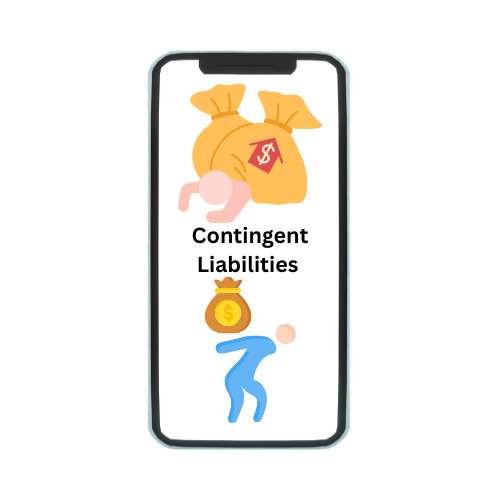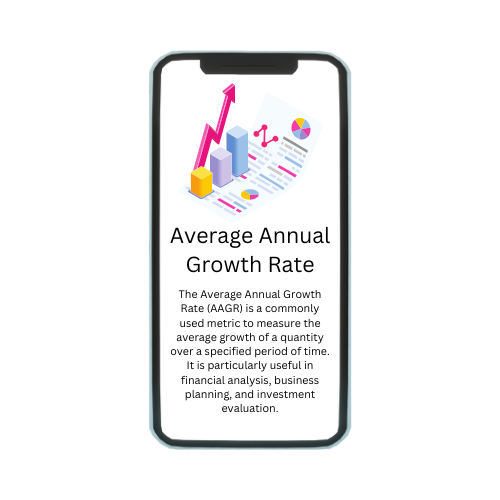What is Bridge Financing??
Bridge financing refers to a short-term loan or financing option used by companies or individuals to meet immediate cash flow needs until longer-term financing can be arranged or a more permanent financial solution is found. Here are some key aspects and characteristics of bridge financing:
Purpose of Bridge Financing
- Immediate Cash Needs: Bridge financing is typically used to cover immediate financial obligations or expenses when there is a timing misalignment between cash inflows and outflows.
- Interim Financing: It serves as a temporary solution to bridge the gap until a more permanent or long-term financing arrangement can be secured.
- Transactional Support: Bridge financing is often utilized in situations such as mergers and acquisitions, real estate transactions, project funding, or during corporate restructuring.
How Bridge Financing Works
Bridge financing works by providing short-term funding to cover immediate cash flow needs or facilitate transactions until longer-term financing can be arranged or finalized. Here’s how bridge financing typically works:
- Need Identification
- Identifying Immediate Cash Needs: A borrower identifies a gap in financing where immediate funds are required but longer-term financing (such as a traditional loan or equity investment) is not yet available or cannot be accessed quickly enough.
- Application and Approval Process
- Application: The borrower applies for bridge financing with a lender, such as a bank, private equity firm, or specialized bridge financing provider.
- Evaluation: The lender assesses the borrower’s creditworthiness, the purpose of the loan, collateral (if applicable), and the feasibility of the exit strategy for repaying the bridge loan.
- Terms and Conditions
- Loan Amount: The lender determines the amount of the bridge loan based on factors such as the borrower’s needs, the value of collateral (if any), and the lender’s risk assessment.
- Interest Rate: Bridge loans typically carry higher interest rates than traditional loans due to their short-term nature and higher perceived risk.
- Collateral: Depending on the lender and the borrower’s financial situation, bridge loans may be secured against collateral, such as real estate, equipment, or other assets, to mitigate risk.
- Disbursement of Funds
- Once approved, the lender disburses the funds to the borrower. This allows the borrower to quickly access the capital needed to address their immediate financial requirements.
- Utilization of Funds
- Immediate Use: Borrowers use bridge financing to cover expenses, seize opportunities (such as purchasing real estate or funding a project), or manage cash flow until longer-term financing is secured.
- Exit Strategy
- Repayment Plan: Borrowers must have a clear exit strategy to repay the bridge loan. This often involves securing permanent financing through traditional loans, equity investments, asset sales, or other sources of funding.
- Timeframe: Bridge loans typically have a short-term repayment period, ranging from a few weeks to up to two years, depending on the terms negotiated between the borrower and the lender.
- Costs and Risks
- Higher Costs: Due to their short-term nature and higher perceived risk, bridge loans generally carry higher interest rates and fees compared to long-term financing options.
- Risk Management: Borrowers need to manage the risks associated with bridge financing, including ensuring they can secure longer-term financing or repay the loan through other means within the agreed-upon timeframe.
- Common Use Cases
- Real Estate Transactions: Bridge financing is often used in real estate to fund property acquisitions, renovations, or development projects until permanent financing or property sales are finalized.
- Mergers and Acquisitions: Businesses use bridge financing to facilitate mergers and acquisitions by providing immediate capital while awaiting approval or securing permanent financing.
- Corporate Finance: Companies may use bridge loans to manage cash flow fluctuations, fund working capital needs, or bridge gaps in funding during growth or restructuring phases.
Different Types of Bridge Financing
Bridge financing comes in various forms tailored to specific financial needs and situations. Here are different types of bridge financing commonly used across different industries and scenarios:
- Real Estate Bridge Loans
- Purpose: Used in real estate transactions to bridge the gap between the purchase of a new property and the sale of an existing property.
- Characteristics: Typically short-term loans with higher interest rates, secured by the property being purchased or other collateral. They can fund renovations, repairs, or upgrades needed to increase the property’s value before refinancing or selling.
- Corporate Bridge Loans
- Purpose: Used by businesses to cover immediate cash flow needs, finance working capital requirements, or fund specific projects until permanent financing can be secured.
- Characteristics: Often unsecured or secured by assets such as accounts receivable, inventory, or future cash flows. They may have higher interest rates and shorter terms compared to traditional corporate loans.
- Acquisition Bridge Financing
- Purpose: Facilitates mergers and acquisitions by providing immediate funding to complete transactions while awaiting longer-term financing or equity investment.
- Characteristics: Short-term loans that bridge the gap between signing a purchase agreement and finalizing permanent financing. They may be secured by the assets of the acquiring company or the target company being acquired.
- Mezzanine Bridge Financing
- Purpose: Provides a hybrid financing option between debt and equity to fund growth initiatives, acquisitions, or refinancing efforts.
- Characteristics: Structured as subordinated debt with higher interest rates and often accompanied by equity warrants or options. Mezzanine bridge loans may be used to bridge gaps in capital structures before securing permanent financing.
- Interim Financing
- Purpose: Covers short-term financing needs during transitions, such as management changes, restructuring, or operational adjustments.
- Characteristics: Flexible financing options tailored to specific operational requirements or strategic initiatives. They are typically used to stabilize operations or bridge gaps in funding until long-term stability or financing is achieved.
- Project Financing Bridge Loans
- Purpose: Supports large-scale infrastructure or development projects by providing interim funding until project financing or long-term debt/equity funding is secured.
- Characteristics: Structured to match project milestones or funding needs, with repayment often contingent upon project completion or cash flow generation. Project bridge financing helps manage cash flow during construction phases or regulatory approvals.
Considerations
- Risk and Cost: Bridge financing generally carries higher risks and costs due to its short-term nature and higher interest rates compared to traditional financing options.
- Exit Strategy: Borrowers must have a clear plan to repay bridge loans through permanent financing, asset sales, or other sources within the agreed-upon timeframe.
- Collateral Requirements: Depending on the type and amount of financing, lenders may require collateral such as real estate, equipment, or future cash flows to mitigate risk.
Bridge Financing Example
- Bridge financing, also known as bridge loans or interim financing, is a short-term loan typically used to meet immediate financial needs, often until longer-term financing can be secured or a specific event occurs. Here’s a hypothetical example in rupees (INR):
- Imagine a real estate developer in India who needs funds to complete construction on a project. They estimate needing ₹5 crore to finish within the next 6 months. However, their main lender delays disbursing the final ₹2 crore until the project is completed.
- To bridge this gap, the developer might seek bridge financing. They secure a bridge loan of ₹2 crore from a financial institution at a higher interest rate, say 15% per annum. This bridge loan helps them cover immediate construction costs and keeps the project on track.
- Once the project is completed and the main lender releases the remaining ₹2 crore, the developer uses it to repay the bridge loan. The interest costs incurred during this period are considered part of the project’s overall financing expenses.
Benefits Of Bridge Financing
Bridge financing offers several benefits, making it a useful tool in various financial scenarios:
- Speed: Bridge loans can be arranged quickly, providing immediate access to funds. This speed is crucial when timing is critical, such as in real estate transactions or business expansions.
- Flexibility: These loans are often flexible in terms of repayment schedules and collateral requirements, allowing borrowers to tailor the terms to their specific needs and financial situation.
- Bridge to Long-Term Financing: They bridge the gap between the immediate need for funds and the availability of long-term financing. This can prevent delays in projects or transactions due to lack of immediate capital.
- Maintaining Operations: Businesses can use bridge financing to cover operational expenses or investment opportunities while waiting for anticipated cash flows or funding.
- Opportunistic Investments: Investors or developers can seize timely investment opportunities that require quick capital deployment, such as acquiring undervalued assets or participating in time-sensitive transactions.
- Credit Enhancement: In some cases, bridge financing can improve creditworthiness by demonstrating the ability to manage short-term debt responsibly, thereby facilitating access to future financing.
- Bridge to Sale: Individuals or businesses can use bridge loans to bridge the timing gap between the purchase of a new property and the sale of an existing one, avoiding the need to wait for the sale proceeds to fund the new purchase.
- Risk Mitigation: Bridge loans can mitigate risks associated with timing mismatches in financial transactions or projects, ensuring continuity and completion.
These benefits highlight the strategic role bridge financing can play in managing cash flow, facilitating growth, and seizing opportunities in both commercial and personal financial contexts.
Risks associated with bridge financing
Bridge financing, despite its benefits, also carries certain risks that borrowers and lenders should be aware of:
- Higher Interest Rates: Bridge loans typically come with higher interest rates compared to traditional financing options. This is because they are short-term and involve higher risk for the lender due to uncertainties in the borrower’s ability to secure long-term financing or complete the planned transaction.
- Short-Term Nature: Bridge financing is intended for short durations, often ranging from a few months to a couple of years. If the borrower fails to secure long-term financing or complete the intended transaction within this period, they may face challenges in repaying the bridge loan on time.
- Financial Strain: Depending on the terms of the bridge loan, borrowers may face significant financial strain due to higher monthly payments or balloon payments at the end of the loan term. This can impact cash flow and liquidity, especially if the anticipated funding or transaction does not materialize as expected.
- Risk of Default: If the borrower fails to repay the bridge loan on time, they may default, leading to potential legal actions by the lender and damage to the borrower’s creditworthiness. Lenders may also impose penalties or fees for late payments or default.
- Market Conditions: Bridge financing can be sensitive to market conditions, such as changes in interest rates or economic downturns. Adverse market conditions can affect the availability of long-term financing or the ability of the borrower to sell assets or properties at expected prices, thereby jeopardizing the exit strategy for repaying the bridge loan.
- Collateral Requirements: Lenders often require substantial collateral to secure bridge loans, which could include real estate, inventory, or other assets. If the borrower defaults, the lender may seize the collateral, potentially leading to loss of assets.
- Incomplete Projects or Transactions: Bridge financing is often used for real estate developments, acquisitions, or mergers. If these projects or transactions do not proceed as planned due to unforeseen circumstances, legal issues, or regulatory challenges, the borrower may struggle to repay the bridge loan.
- Risk of Renegotiation: In cases where bridge financing is used to facilitate acquisitions or mergers, there is a risk that the terms of the deal may need to be renegotiated if long-term financing is delayed or not secured as expected. This can lead to additional costs, delays, or even cancellation of the transaction.
- Impact on Relationships: Bridge financing arrangements can strain relationships between borrowers and lenders, especially if there are disputes over terms, repayment schedules, or the performance of underlying assets.
- Regulatory and Compliance Risks: Depending on the jurisdiction and industry, bridge financing may be subject to regulatory scrutiny or compliance requirements, adding complexity and potential legal risks to the transaction.
Conclusion
Managing these risks requires careful planning, thorough due diligence, and clear communication between all parties involved in bridge financing transactions. Borrowers should assess their ability to repay the loan under various scenarios, while lenders should conduct comprehensive risk assessments to mitigate potential losses.





